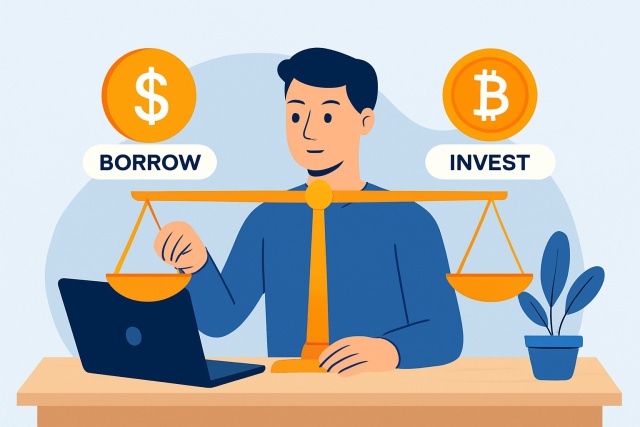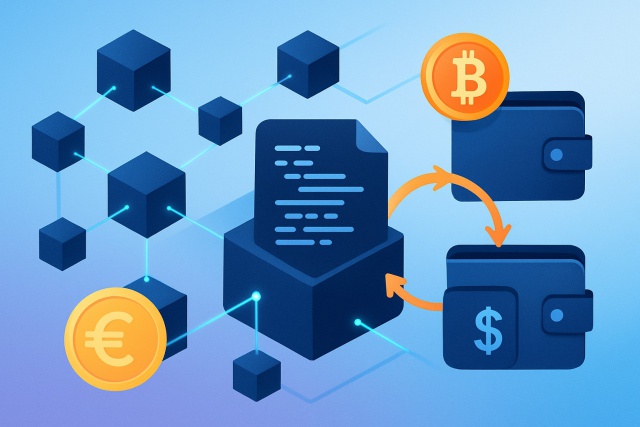What Is Staking and Why It Matters in Crypto?


Staking has rapidly become a cornerstone in the world of cryptocurrency and decentralized finance (DeFi). This article walks you through staking in clear, easy steps—no jargon—explaining how it keeps blockchain networks humming along while giving crypto holders a chance to earn some rewards and play a part in governance.
What Does Staking Mean? A Clear and Simple Explanation You Can Actually Understand
Staking basically means locking up your cryptocurrency within a blockchain network to help it run smoothly—think of it as backing the system by validating transactions and keeping everything secure. In return you earn rewards that function like interest from your usual savings account, only this time it’s happening within a decentralized digital world.
- Staking is putting your cryptocurrency tokens on hold for a specific period, like leaving your valuables in a safe deposit box.
- It helps keep the blockchain network secure by reaching consensus.
- Validators get the nod to confirm new blocks based on how many tokens they have locked up—think of it as earning your spot at the table.
- Those who stake their tokens typically see rewards often proportionate to the size of their stake that can brighten anyone’s day.
- Plus, staking usually grants participants some voting power in network decisions—no arm-twisting required.
Staking mostly takes place on Proof-of-Stake (PoS) blockchains and acts as a much more energy-friendly alternative to the old-school Proof-of-Work (PoW) systems, which rely on those intense calculations that gobble up a surprising amount of electricity.
How Staking Usually Plays Out in Crypto Networks
To wrap your head around staking, it’s helpful to first get a feel for how modern blockchains validate transactions. In Proof of Stake systems, validators are chosen to process transactions based largely on how much crypto they lock up as collateral.
You lock your tokens on a proof-of-stake blockchain. It is like putting your money in a piggy bank that only opens under certain rules.
Doing this lets you jump into the action as a validator yourself or pass the baton by delegating your tokens to someone else up for the job.
Validators are the busy bees behind the scenes creating and confirming new blocks on the network.
They earn staking rewards as a thank-you gift for keeping the transaction engine running smoothly.
The rewards you pocket usually hinge on how much you’ve staked and how reliable your chosen validator turns out to be—no one likes flaky teammates.
Locking up more cryptocurrency and keeping it staked for a longer stretch usually bumps up your chances of earning steady rewards. Many networks also offer delegated staking, which lets holders hand off their tokens to trusted validators and earn rewards without having to wrestle with complex infrastructure.

The Importance of Staking in Crypto and DeFi Why It Really Matters
Staking plays a key role not just for blockchain networks but for individual crypto investors too. It’s a clever way to help networks become more decentralized and secure while using far less energy than the clunkier methods of the past. For everyday users, staking turns idle tokens into a neat income stream and often nudges individuals to stick around longer with DeFi projects and the wider blockchain world.
- Staking plays a key role in boosting network security by encouraging participants to put something valuable on the line.
- It provides a consensus mechanism that typically sips a lot less energy compared to the old-school Proof-of-Work.
- Rewards act as a nudge to keep validators honest, aligning their goals with the overall success of the network—everyone wins that way.
- It offers crypto holders a nifty way to earn some passive income without giving up their assets.
- Staking supports decentralized governance by empowering participants to have a real say in protocol changes, making the whole process a bit more democratic.
Staking has really blossomed into a cornerstone of many DeFi ecosystems, all thanks to its pretty compelling benefits. It nudges users to roll up their sleeves and get involved in blockchain communities, while also giving a solid boost to the growth of decentralized applications (dApps) and services.
Staking is kind of like holding shares in a company. When you stake your tokens, you’re not just sitting on the sidelines—you’re actively helping run the network. In return, you earn rewards and get a voice in how things are governed, which, let’s be honest, makes it feel a bit more personal.
Different Ways to Stake Direct, Delegated, and Liquid Staking A Quick Dive
Staking comes in several flavors depending on what you prefer and which blockchain you’re dealing with. Direct staking means rolling up your sleeves and running your own validator node. You take a hands-on approach to keep the network safe and sound. Delegated staking is like passing the baton; you hand over your tokens to seasoned validators who handle the technical details. Liquid staking is more laid-back and flexible. It gives you derivative tokens that stand in for your staked assets, letting you trade or redeem them while still earning rewards.
| Type of Staking | Description | Pros | Cons | Typical User |
|---|---|---|---|---|
| Direct Staking | Running your own validator node right on the network | Full control in your hands, complete rewards, plus a say in governance | Requires technical know-how, reliable hardware, and staying online like clockwork | Seasoned crypto enthusiasts who like to be hands-on |
| Delegated Staking | Handing over your stake to a pro validator | Easy to get going, barely any tech headache, mostly a set-it-and-forget-it approach | You give up some control, and validators do take a bite of the rewards | Newcomers or people juggling a busy schedule |
| Liquid Staking | Locking up tokens while still having tradable derivatives in your pocket | Keeps your assets flexible, lets you participate in DeFi fun, and never feels stuck | Smart contract risks lurk, plus the wild ride of price fluctuations | Traders and DeFi fans who like to keep things moving |
Picking the right type of staking usually boils down to how tech-savvy you feel and how much control you want over your tokens. It also depends on whether easy access to liquidity is a big deal for you. Beginners often lean towards delegated staking because it’s straightforward. The more seasoned individuals might roll up their sleeves to run validators or dive into liquid staking.
Getting Started with Staking A Beginner's Guide (No Stress, Just Steps)
Getting started with staking doesn’t require you to be a tech wizard. This guide will help you pick the right staking network, set up compatible wallets without breaking a sweat, grab the necessary tokens, and lock your assets safely.
Pick a well-regarded Proof-of-Stake blockchain that fits your goals perfectly.
Grab the native token of that blockchain from an exchange or wallet—just the basics, nothing too fancy.
Set up a wallet that is compatible with staking features. It is like getting the right shoes before a marathon.
Decide whether you want to roll up your sleeves and become a validator yourself or simply delegate your tokens to someone you trust.
Follow the staking platform's instructions carefully to stake or lock your tokens. Think of it as reading the recipe before you start cooking.
Keep an eye on your staking rewards and the health of your node because staying vigilant can really pay off in the long run.
New stakers can begin raking in some passive income while lending a hand in securing the blockchain.
Potential Risks and Challenges in Staking What You Need to Watch Out For
Staking can offer some pretty appealing rewards but it’s not without its quirks and risks—you really need to keep those in mind. These include ups and downs of token prices and sometimes frustrating fixed lock-up periods. There are penalties if validators slip up or disappear offline and occasional vulnerabilities lurking in smart contracts, especially with liquid staking platforms.
- Their value is not always set in stone.
- You might find yourself staring down slashing penalties that nibble away at your stake.
- Locked tokens keep your funds tied up, which can throw a wrench in your liquidity plans.
- Often end up as prime targets for hackers and security breaches.
- Affecting whether staking is even legal or how much Uncle Sam wants a slice of your pie.
Being aware of these challenges gives you a leg up when making smarter staking decisions. Approaches like spreading your stakes across several validators and choosing reliable platforms usually help keep the risks in check. Staying on top of crypto regulations also helps.
The Future of Staking and Its Ripple Effect on DeFi Growth
Staking is growing hand in hand with the rapidly expanding DeFi space and opens fresh ways to boost security and enhance user experience with added flexibility.
These developments strongly hint that staking isn’t going anywhere anytime soon when it comes to securing blockchain networks and giving the decentralized finance ecosystem a much-needed boost.






